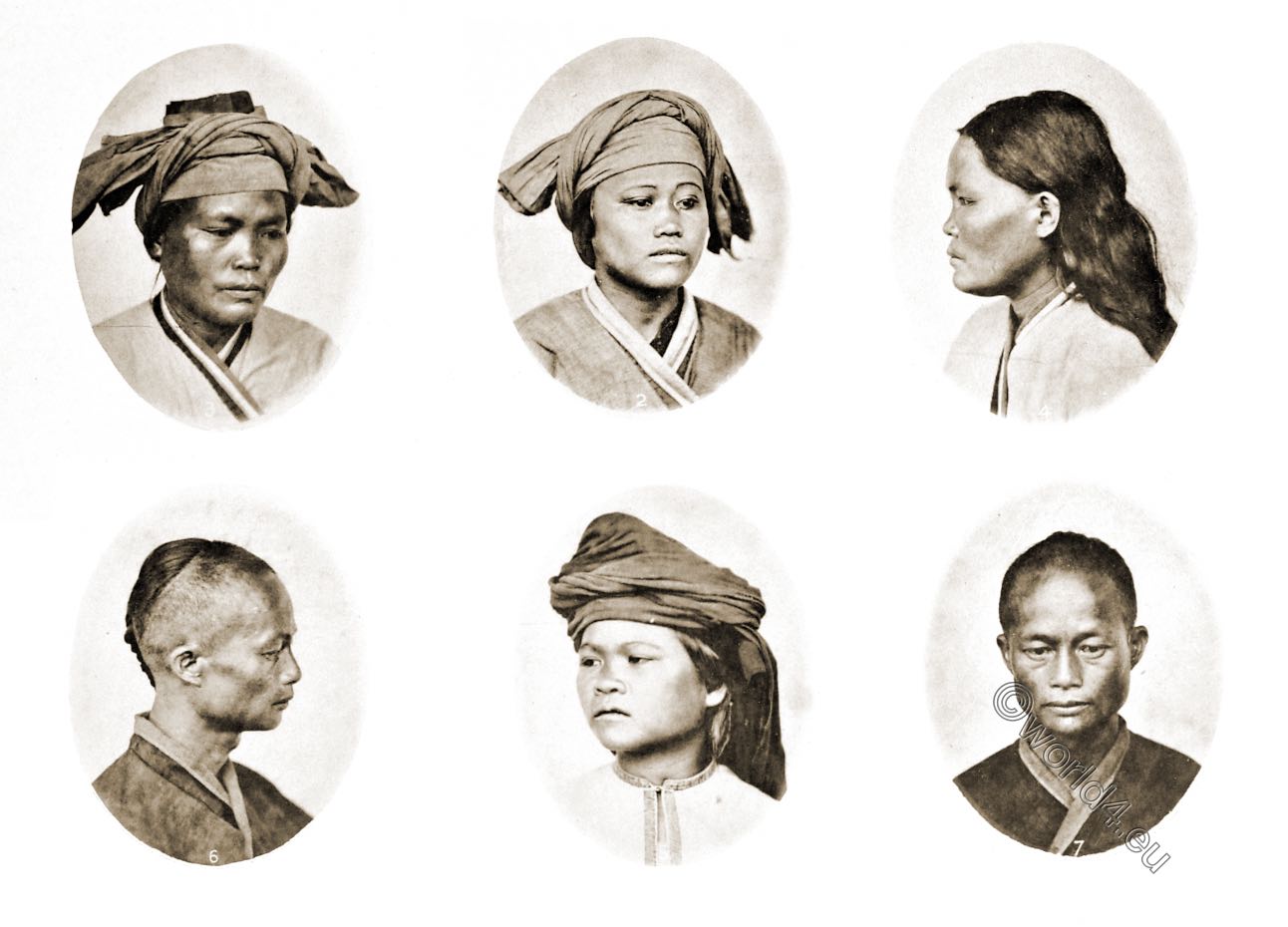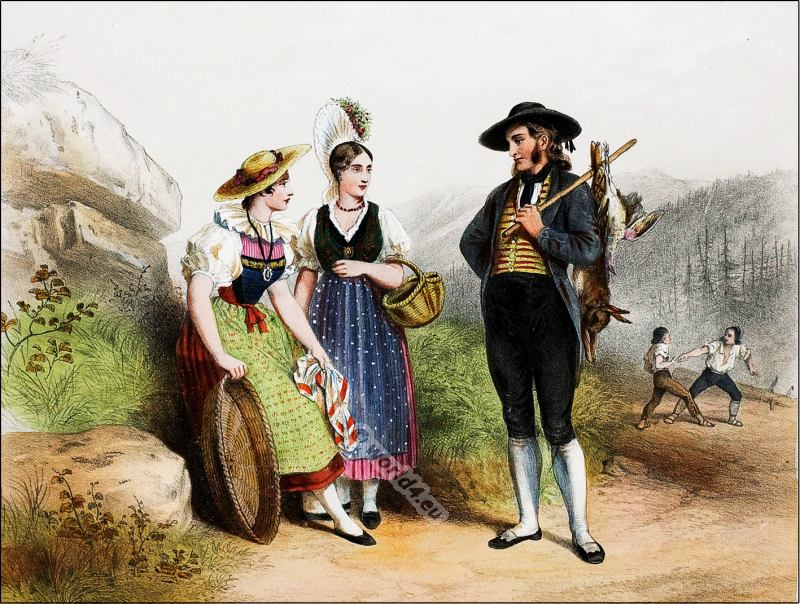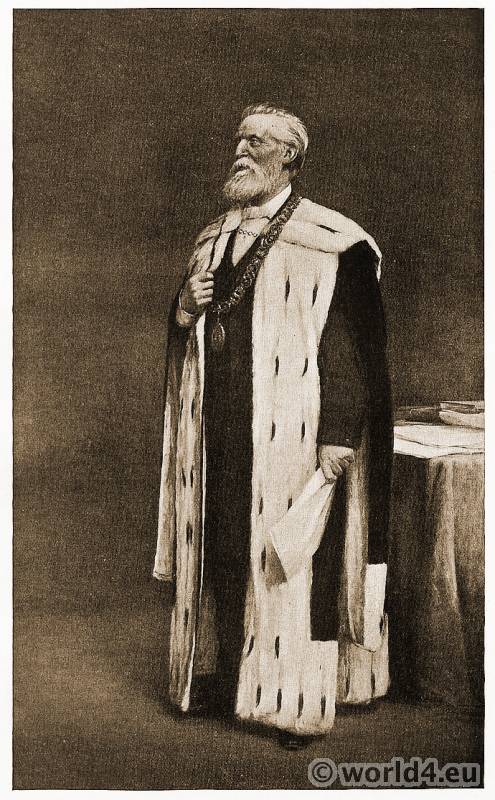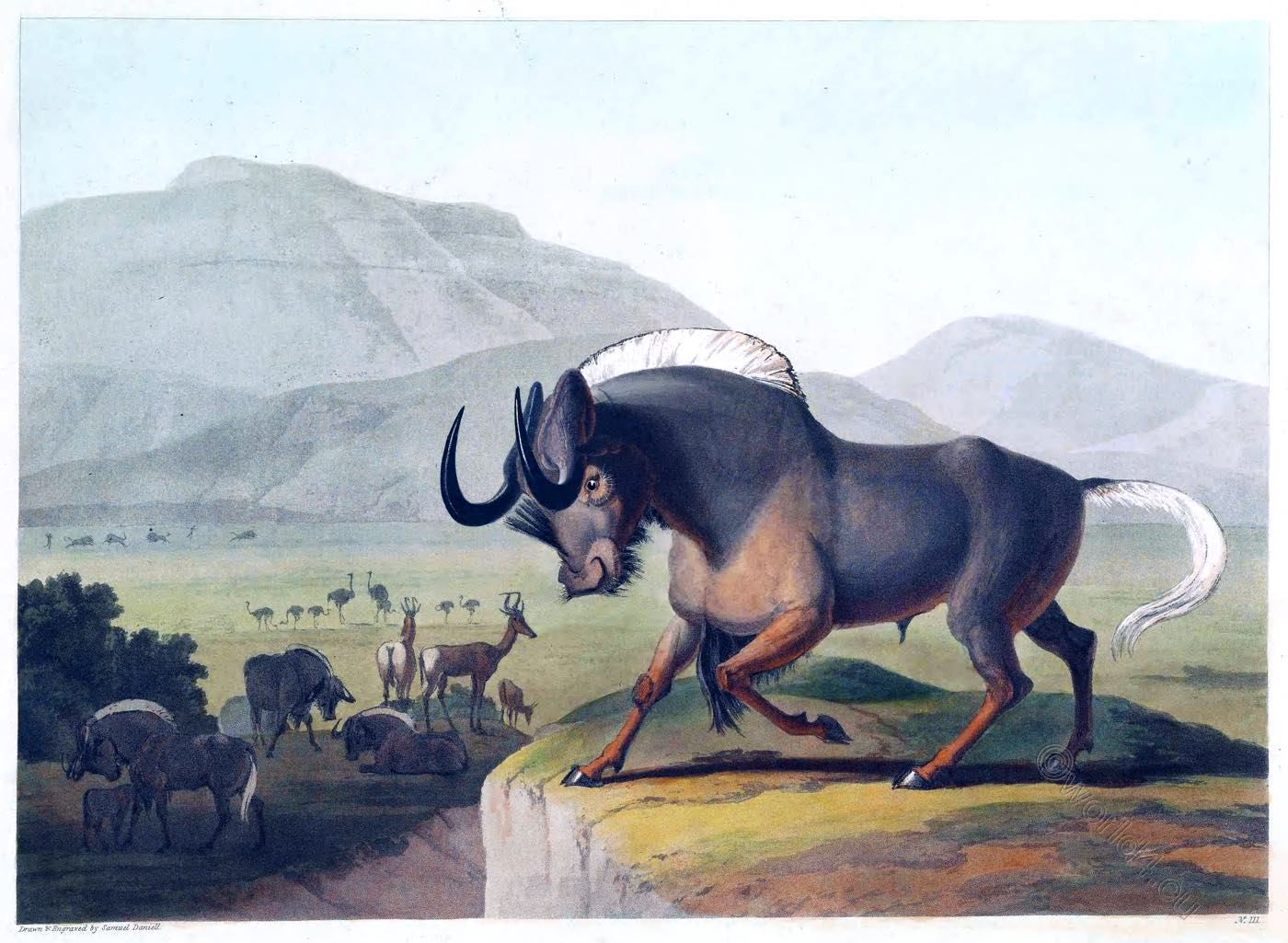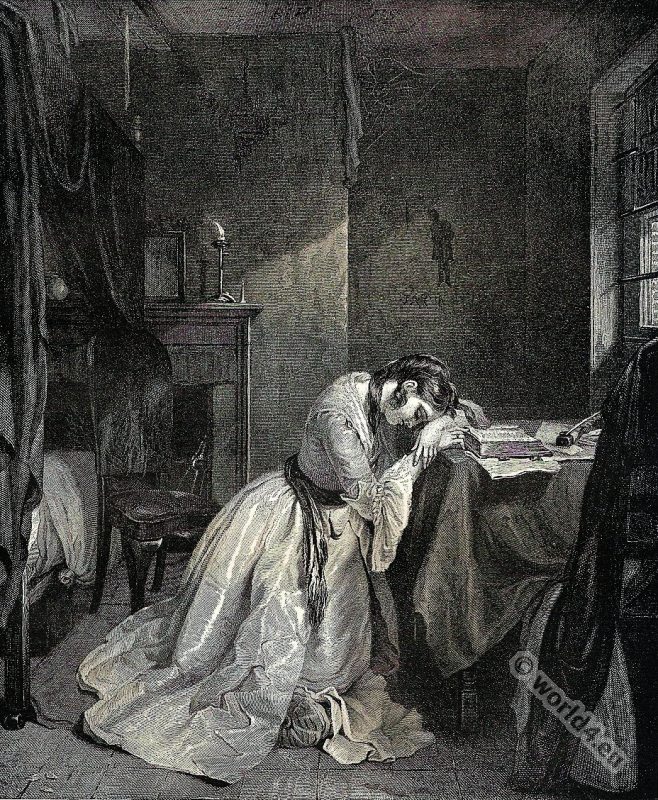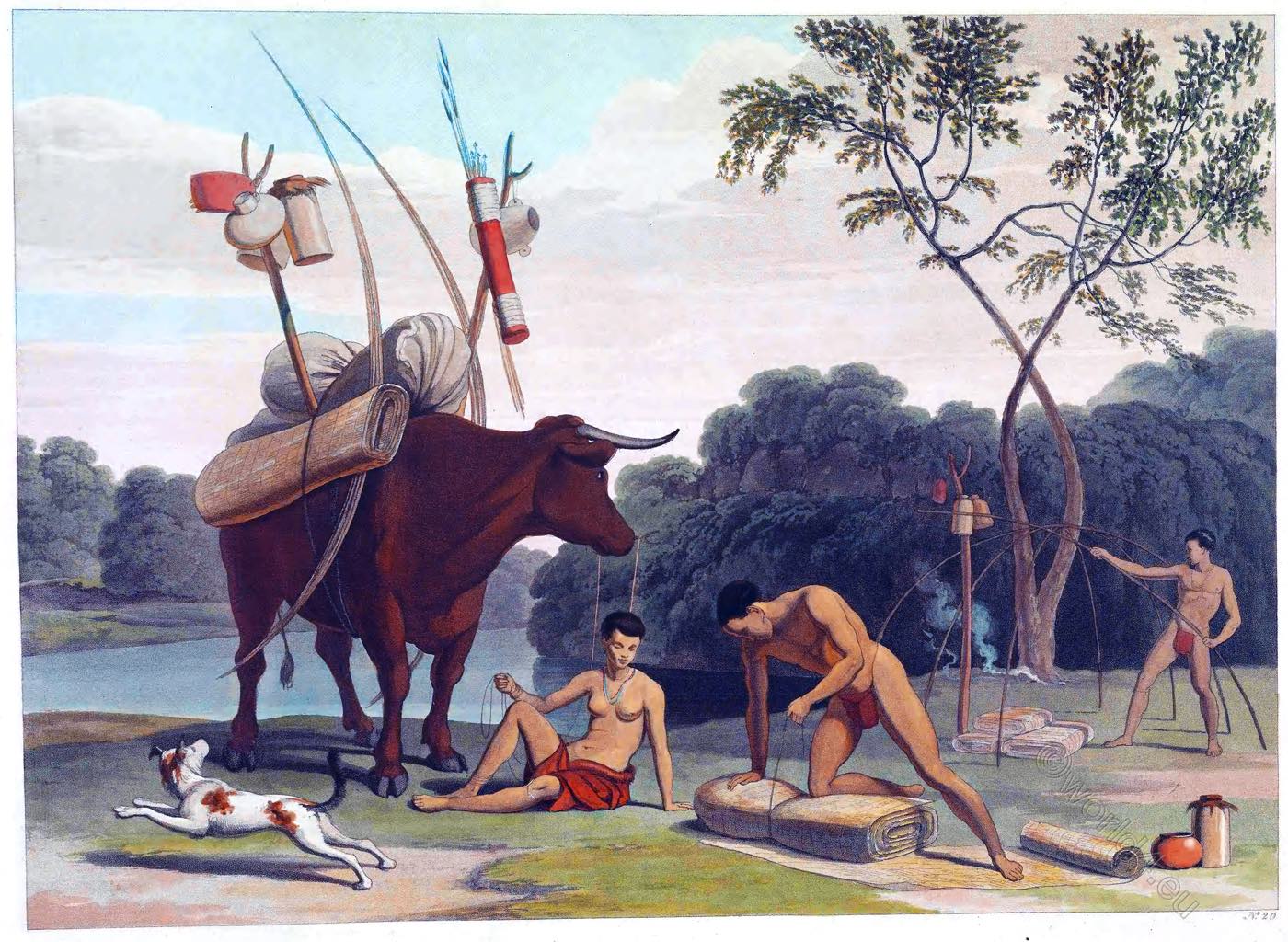
KORANA PEOPLE PREPARING TO REMOVE.
N° 20. African scenery.
AMONG the various tribes of the Hottentot *) race the Korah’s, who dwell along the banks of the Orange River, have attained the highest degree of civilization. Their circular huts are constructed with more care and regularity, and the mats with which they are covered are more firmly and neatly made, than what are found among other tribes.
They possess also a greater number and variety of utensils for domestic use; their vessels are sometimes made of clay baked in the sun, of wood hollowed out, and of gourds.
Their clothing is not much different from the others, but their persons are more cleanly, owing probably to the abundance of water with which the Orange River is at all seasons, and more especially in summer, supplied, and which in almost every other part of the southern angle of Africa is a scarce article.
Their animals consist of horned cattle, sheep, goats, and dogs. They have no kind of carriages, but, on their removal from place to place, their mats, their household furniture and utensils, are packed on oxen, as in the annexed print, which, in addition, usually carry the women and children.
Source: African scenery and animals by Samuel Daniell, William Daniell, Thoma Dowdeswell. London 1804.
The Korana.
The Korana (also Korah, Koranna) were a population group in today’s South Africa until the 19th century. They mainly descend from the Khoikhoi and lived in a wide strip from the Atlantic coast to the settlement area of the Basotho near the Drakensberg mountains.
The Korana originally lived in the region of today’s Cape Town. They were driven out by the arrival of white settlers from 1652 onwards. They moved northeast until they settled at the Orange River around 1750 and partly mixed with Batswana. They spoke the Khoikhoi dialect Korana and lived a semi-nomadic life as cattle breeders, occasionally also as rustlers.
At the beginning of the 19th century, the number of their thefts increased because there were numerous Basotho and Batswana in their settlement area, which had been rendered defenceless by the Mfecane’s time of need. They partly competed with the Griqua, who also descended from Khoikhoi, but also other ethnic groups. The head of the group was a Kaptein (“captain”), for example Jan Bloem and Berend Bloem of the Korana living on the Vaal, called Springbok-Koranna. Other Koranna lived with Clocolan in what is now the province of the Free State. Koranna also lived in the area of today’s city of Pofadder in the North Cape Province – the city is named after the Korana captain Klaas Pofadder.
*) Hottentot was a collective term first used by the Boers in colonial times for the Khoikhoi family of peoples living in today’s South Africa and Namibia, to which the Nama, the Korana and Griqua (Orlam and Baster) belonged. It is now assumed that the Dutch term Hottentot has been used mainly in a derogatory, racist and discriminatory manner since its introduction. Moreover, the English word Hottentots has been applied to people with a supposedly inferior culture and lack of intellectual ability.
Related
Discover more from World4 Costume Culture History
Subscribe to get the latest posts sent to your email.

